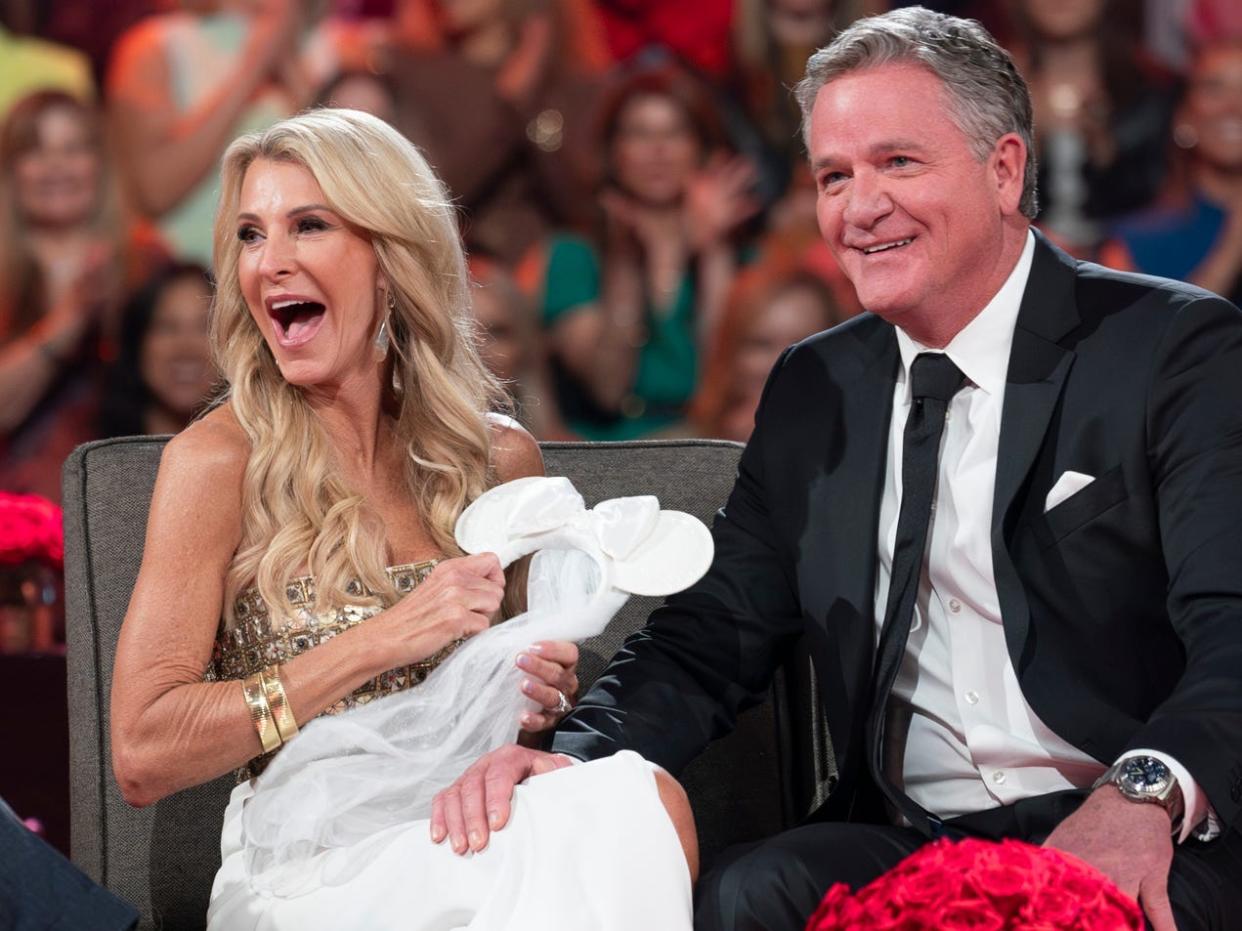Joan Vassos and Chock Chapple, stars of Golden Bachelorette, aren’t rushing into marriage anytime soon.
The couple, who became engaged during the finale of the ABC show in Bora Bora, shared an update on their wedding plans in an interview with Bachelor Nation. They emphasized that they are taking their time with the preparations.
“Yeah! I think we’re really enjoying where we are right now, and I think if we put that pressure on us [to wedding plan], we won’t enjoy what we’re doing now,” Vassos, 61, said. “So there’s no rush.”
She continued, “We don’t have a biological clock, we’re not having kids, so I think when the time is right we’ll know it and we’ll go and do it! But right now what we’re doing is perfect.”
In addition to their own plans, Chapple noted that the couple already has a lot going on, including several family weddings and possibly another engagement on the horizon, courtesy of Vassos’ four children—Nicholas, Erica, Allison, and Luke—from her late husband, John Vassos.
“Joan has a son getting married this summer and then probably another one getting engaged,” Chapple shared.
Vassos added, “Yeah, so I have family weddings I’m dealing with, which is wonderful and all happy things. So we’re gonna take a back seat to all that.”

The couple, who are based in Maryland and Kansas, also discussed how they make their long-distance relationship work. Vassos shared that they see each other “like every other week” and “make an effort” to ensure their relationship stays strong.
“We kind of combine our schedules every month and see where we can see each other, so it’s been great,” she explained. “… And if we don’t see each other in about 14 days, we both start to miss each other. So that ‘absence makes the heart grow fonder’ is really true.”
Chapple added that they’re “always checking” their calendars to find time together, despite their busy family and work lives. “The secret, from my aspect, is Joan’s in charge. So I just show up and it works out that way.”
Vassos added, “It does take effort; it’s not as easy as, ‘Hey, let’s get together tonight because you’re right down the road,’ so you have to make an effort. But it’s actually a fun way to kind of do it.”
She continued, “We can meet in fun places. Like, we’ve been to Cancún, and we meet in L.A. all the time, we go to New York. So with our meetings, we find something fun to do. We get great opportunities and we try to make it work for us.”
“But you still have a life. Just because we’re engaged and we’re in love and I plan to spend my future with him, doesn’t mean you have to spend every minute together,” she added.


